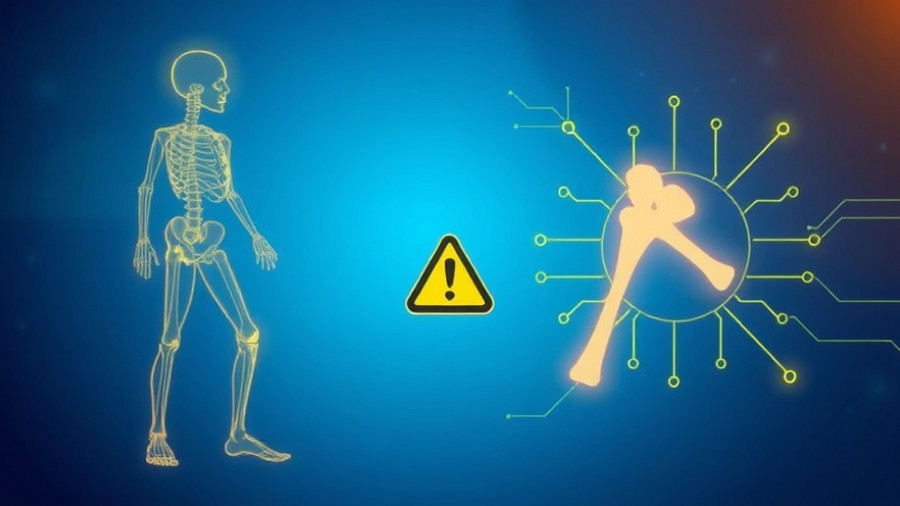
Unlocking the Secrets of Osteoporosis: The Role of AI
Osteoporosis affects more than 200 million people globally, taking a disproportionate toll on women, who face a staggering risk of fracture in their lifetimes. Understanding the silent nature of osteoporosis is essential, as many do not know they have it until it's too late. However, a collaborative initiative is leveraging artificial intelligence (AI) to revolutionize osteoporosis management, promising earlier detection and better care outcomes.
AI as a Game Changer in Disease Detection
The push to integrate AI in osteoporosis care is not just a technology upgrade; it represents a vital shift in how healthcare providers approach bone health. A study backed by Amgen, Viz.ai, and HCA Healthcare Research Institute explores how AI can detect osteoporosis in patients with fragility fractures—significantly improving the diagnostic process.
Clinical decision support systems, such as Viz Osteoporosis, analyze patient data in real-time to identify women over 55 presenting with acute fractures, triggering necessary follow-up for osteoporosis diagnosis and treatment. This innovation addresses a critical awareness gap that has allowed osteoporosis to remain underdiagnosed, especially in postmenopausal women.
The Silent Health Crisis: Why Early Detection Matters
Fewer than 20% of postmenopausal women receive a diagnosis for osteoporosis in the year following a fracture, highlighting a significant oversight in women's healthcare. This lack of early detection leads to further fractures, increased healthcare costs, and ultimately, poorer health outcomes. Consequently, pioneering AI solutions like Viz Osteoporosis aim to reduce not just the occurrence of fractures but also the healthcare burden associated with them, which is expected to rise to $25.3 billion by 2025.
From Research to Real-World Application
The integration of AI doesn't stop at fracture detection; it extends to improving the overall management of osteoporosis. Recent advancements include using opportunistic imaging—repurposing existing scans to assess bone density—thus eliminating the need for additional, costly procedures. For instance, the FDA-approved Bunkerhill BMD AI algorithm can assess bone density from non-contrast CT scans, effectively improving accessibility to critical health assessments.
Moreover, tools like the FRAX model, which employs AI for fracture risk prediction, represent how data-driven decisions can transform prevention strategies. These technologies not only have the potential to enhance fracture detection rates but also foster a holistic approach to managing osteoporosis in healthcare settings.
Implications for Small Business Owners
For small business owners in the healthcare sector, especially those interested in leveraging AI technologies, the integration of AI-driven tools like Viz Osteoporosis and Bunkerhill BMD can lead to significant improvements in patient care. By adopting AI, businesses can enhance service delivery while simultaneously participating in a larger movement toward smarter healthcare systems.
Small businesses can also benefit from investing in training and resources that embrace AI technologies, ensuring they stay ahead in a competitive market. This not only applies to healthcare facilities but also to any business looking to improve operational efficiencies and client satisfaction through technological adoption.
Concluding Remarks: The Future of Osteoporosis Care
As professionals and innovators rally to combat the silent crisis of osteoporosis, integrating AI into diagnostic and treatment pathways demonstrates a substantial potential to reshape outcomes. For small business leaders in healthcare, now is an opportune moment to explore and adopt AI technologies that facilitate timely and effective patient interventions. Embracing these advancements not only enhances care quality but also opens new avenues for growth within the healthcare landscape.
 Add Row
Add Row  Add
Add 




Write A Comment